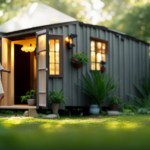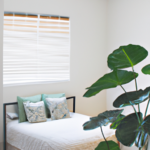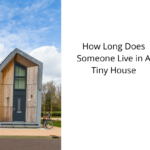Beginners Guides
How To Start A Tiny House

Were you aware that the typical size of homes in America has almost tripled over the last five decades? This explains why an increasing number of individuals are opting for the tiny house movement as a method to simplify their existence and lessen their environmental footprint.
If you’re intrigued by the idea of living in a tiny house but don’t know where to start, you’ve come to the right place. In this article, I will guide you through the process of starting your own tiny house, from defining your goals and priorities to customizing and decorating your space.
We’ll cover everything from researching local regulations to designing your layout and choosing sustainable materials. Whether you’re looking to downsize, save money, or live a more minimalist lifestyle, building a tiny house can be a rewarding and fulfilling experience.
So let’s get started on this exciting journey towards a simpler, more sustainable way of living.
Key Takeaways
- Define goals and priorities for building a tiny house, considering motivations such as sustainability, downsizing, or affordability.
- Research local regulations and zoning laws for tiny houses to ensure compliance and avoid legal issues.
- Set a budget and financing plan for the project to properly manage expenses and secure necessary funds.
- Maximize space utilization by designing the layout efficiently and using sustainable and space-saving materials.
Define Your Goals and Priorities
So, you’re ready to embark on the exciting journey of building your own tiny house, but before you dive in headfirst, let’s talk about defining your goals and priorities.
To successfully start your tiny house project, it’s crucial to have a clear vision of what you want to achieve. Take some time to define your objectives and identify your priorities.
Start by asking yourself why you want to build a tiny house. Is it to have a more sustainable lifestyle, to downsize and simplify your life, or to have a cozy and affordable home? Understanding your motivations will help shape your decision-making throughout the process.
Next, consider your priorities. What features are essential for your tiny house? Do you prioritize energy efficiency, ample storage space, or a specific architectural style? By identifying your priorities, you can focus your efforts and resources on what matters most to you.
Defining your goals and priorities will serve as a compass, guiding you through the myriad of decisions you’ll face when building your tiny house. It will help you stay on track and ensure that every choice you make aligns with your vision.
Now that you have a clear understanding of your goals and priorities, it’s time to research local regulations and zoning laws, ensuring that your tiny house project complies with the legal requirements.
Research Local Regulations and Zoning Laws
First things first, you’ve gotta dive deep into researching the crazy local regulations and zoning laws that could make or break your dream of living in a cozy, compact paradise!
The research process may seem daunting, but it’s essential to understand the rules and restrictions that apply to tiny houses in your area. Start by checking with your local planning department or building department to find out if there are any specific regulations or permits required for tiny houses.
Some areas have minimum square footage requirements, while others may have restrictions on where you can park or build your tiny house. It’s important to know what potential challenges you may face before you start building or purchasing a tiny house.
This research will help you avoid any legal issues down the line and ensure that your tiny house is compliant with local laws. Once you have a clear understanding of the regulations, you can confidently move forward with setting a budget and financing plan for your tiny house dream.
Set a Budget and Financing Plan
Once you’ve navigated the maze of local regulations and zoning laws, it’s time to map out your budget and create a financing plan for turning your cozy, compact dream into a reality.
Budgeting strategies are essential when starting a tiny house project. Begin by determining how much you can afford to spend and allocate funds for each aspect of the construction process, including materials, labor, and permits. Consider researching different cost-saving techniques, such as using reclaimed materials or opting for energy-efficient appliances, to help stretch your budget further.
When it comes to financing options, there are several routes you can explore. Traditional bank loans and personal savings are common choices for those with a strong credit history and stable income. However, if these options are not available to you, there are alternative methods to consider.
Crowdfunding platforms allow you to gather financial support from friends, family, and even strangers who believe in your tiny house vision. Additionally, some companies offer financing specifically tailored to tiny house projects.
As you transition into the next section about designing your tiny house layout, keep in mind that your budget and financing plan will play a significant role in determining the size and features of your home. So, let’s move on to creating a space that maximizes every square inch of your tiny house while reflecting your unique style and needs.
Design Your Tiny House Layout
Mapping out your budget and financing plan is a crucial step, but now it’s time to delve into the creative process of designing the layout for your compact dream home. When it comes to tiny house living, every square inch counts, so it’s essential to maximize the use of space.
Here are some key considerations for designing your tiny house layout:
-
Multi-functional furniture: In a tiny house, every piece of furniture should serve more than one purpose. Look for items that can convert or have hidden storage compartments to make the most of your limited space.
-
Open floor plan: Opting for an open layout can create a sense of spaciousness in your tiny house. By eliminating unnecessary walls, you can make the most of your square footage and allow for better flow and natural light.
-
Loft spaces: Utilizing loft spaces can provide additional square footage for sleeping, storage, or a home office. Consider incorporating a loft area to maximize vertical space.
-
Compact appliances: Choose compact appliances designed specifically for small spaces. These appliances are not only space-saving but also energy-efficient, reducing your carbon footprint.
-
Clever storage solutions: Think outside the box when it comes to storage. Utilize under-stair storage, built-in shelving, and vertical storage solutions to maximize every inch of your tiny house.
Now that you have a solid plan for your tiny house layout, it’s time to move on to the next step: choosing sustainable and space-saving materials.
Choose Sustainable and Space-Saving Materials
When designing your compact dream home, it’s essential to prioritize sustainability and space-saving by selecting materials that are both eco-friendly and efficient in maximizing every inch of your living space. Sustainable building materials not only reduce your carbon footprint but also create a healthier indoor environment. Materials like reclaimed wood, bamboo, and recycled metal are great options that minimize waste and promote resource conservation. These materials not only look aesthetically pleasing but also provide durability and longevity to your tiny house.
Efficient space utilization is another crucial aspect to consider when choosing materials for your tiny house. Opt for multi-functional furniture that can serve multiple purposes, such as a sofa that converts into a bed or a dining table with built-in storage compartments. Additionally, using vertical space effectively can significantly increase your storage capacity. Install shelves, hooks, and racks on walls to keep your belongings organized and easily accessible.
To give you a visual representation of how sustainable materials and efficient space utilization can transform your tiny house, here is a table showcasing some examples:
| Sustainable Building Materials | Efficient Space Utilization |
|---|---|
| Reclaimed wood | Built-in storage |
| Bamboo | Convertible furniture |
| Recycled metal | Vertical storage |
By incorporating these materials and design strategies, you can create a tiny house that not only minimizes its impact on the environment but also maximizes your living experience. Now, let’s explore how to find a suitable location for your tiny house, ensuring that it aligns with your lifestyle and needs.
Find a Suitable Location for Your Tiny House
Discovering the perfect location for your compact dream home is an exciting opportunity to tailor your living experience to your unique lifestyle and needs. When it comes to finding a suitable location for your tiny house, there are a few options to consider.
One option is to join a tiny house community. These communities provide a supportive and like-minded environment where you can connect with fellow tiny homeowners and share resources. Not only does this allow you to build a sense of community, but it also provides access to communal spaces and amenities.
Another option to explore is off-grid living. This involves setting up your tiny house in a remote location, away from traditional utilities and services. Off-grid living offers the freedom to live independently and sustainably, relying on renewable energy sources like solar panels and rainwater harvesting systems. It’s a chance to disconnect from the grid and embrace a simpler way of life.
As you search for the perfect location, consider factors such as accessibility, proximity to amenities, and the overall vibe of the area. You want to find a place that aligns with your values and lifestyle.
Once you have found the ideal spot, it’s time to move on to the next step: obtaining permits and licenses. This ensures that your tiny house complies with local regulations and zoning requirements.
Obtain Permits and Licenses
Navigating the bureaucratic maze to obtain permits and licenses may feel overwhelming, but it’s an essential step towards turning your dream of living in a tiny house into a reality. Before you even start the construction process, it’s crucial to understand the cost implications of obtaining permits and licenses. While the fees vary depending on your location, they can range from a few hundred dollars to several thousand. It’s important to budget for these expenses to avoid any surprises along the way.
In addition to the financial aspect, navigating local regulations and zoning laws can present both challenges and benefits. On one hand, you may encounter strict regulations that require specific dimensions, materials, or even architectural designs for your tiny house. This can limit your creativity and add extra costs to ensure compliance. On the other hand, zoning laws can also work in your favor. Some areas have embraced the tiny house movement and have created special zones or exemptions that make it easier to legally live in a tiny house.
Understanding and complying with these regulations may require some research and patience, but it’s worth it in the end. By obtaining the necessary permits and licenses, you can ensure that your tiny house is legal and safe. So, as you embark on this journey, remember that the bureaucratic process is just one step towards making your tiny house dreams a reality.
Now, let’s transition into the next section where we’ll explore the options of either building your tiny house yourself or hiring a contractor to bring your vision to life.
Build or Hire a Contractor to Construct Your Tiny House
Consider the exhilarating prospect of bringing your dream miniature abode to life by either rolling up your sleeves and constructing it yourself or enlisting the expertise of a skilled contractor. Building a tiny house from scratch allows you to customize every detail to your liking, while hiring a contractor can save you time and ensure professional craftsmanship. Let’s explore the pros and cons of each option:
-
Build it yourself:
- Cost-effective: Building your own tiny house can be more affordable, as you won’t have to pay for labor costs.
- Creative freedom: You have complete control over the design and layout of your tiny house, making it truly unique.
- Learning experience: Constructing your tiny house is a great opportunity to learn new skills and gain valuable knowledge.
- Time-consuming: Building a tiny house requires a significant time commitment, especially if you have limited construction experience.
- Potential challenges: Without professional guidance, you may encounter difficulties with permits, codes, and construction techniques.
-
Hire a contractor:
- Expertise and efficiency: Contractors have the experience and knowledge to efficiently build your tiny house to code.
- Time-saving: Hiring a contractor allows you to focus on other aspects of your life while they handle the construction process.
- Guaranteed quality: A skilled contractor can ensure that your tiny house is built to a high standard of craftsmanship.
- Higher cost: Hiring a contractor will add to the overall cost of your tiny house project.
- Limited customization: You may have less control over the design and layout of your tiny house when working with a contractor.
When deciding whether to build or hire a contractor, consider your budget, time availability, and desired level of involvement. Regardless of your choice, the next step is to install essential utilities and systems, ensuring your tiny house is fully functional and ready for a cozy living experience.
Install Essential Utilities and Systems
To ensure your miniature abode is fully functional and ready for a cozy living experience, it’s time to bring in the experts and have essential utilities and systems installed.
Choosing the right appliances is crucial when it comes to maximizing the limited space in your tiny house. Look for energy-efficient options that suit your needs and lifestyle. Compact appliances like a mini-fridge, a stove, and a washer/dryer combo will save valuable space while still providing the comforts of a traditional home.
Connecting to off-grid utilities is another important consideration. Since tiny houses are often built in remote locations or on wheels, it’s essential to have alternative power sources. Solar panels and wind turbines are popular choices for generating electricity, while rainwater collection systems and composting toilets can help minimize water usage and waste. Working with professionals who specialize in off-grid systems will ensure that everything is properly installed and functional.
Now that your tiny house is equipped with all the necessary utilities and systems, it’s time to move on to the next phase: customizing and decorating your space. This will allow you to personalize your tiny house and create an environment that reflects your style and needs. By incorporating your favorite colors, textures, and furnishings, you can transform your tiny house into a cozy retreat that feels like home.
Customize and Decorate Your Tiny House to Reflect Your Style and Needs
Now that I’ve created my own little sanctuary, it’s time to infuse it with my unique style and make it a place that truly feels like mine. Customization options are endless when it comes to decorating a tiny house.
With limited space, it’s important to make every corner count. One of the first things I did was invest in multi-functional furniture. For example, I found a sofa that doubles as a storage unit, allowing me to keep my belongings organized and out of sight.
Another customization option I explored was adding shelves and hooks to the walls. This not only adds a decorative element but also provides additional storage solutions. I used the shelves to display my favorite books and trinkets, while the hooks were perfect for hanging coats and bags.
To bring more personality into my tiny house, I incorporated pops of color through throw pillows, rugs, and curtains. These small touches make a big impact and reflect my personal style. Lastly, I made sure to incorporate plenty of natural light by using sheer curtains and strategically placing mirrors to create the illusion of a larger space.
Customizing and decorating a tiny house is all about maximizing the available space and infusing it with your unique style. By incorporating storage solutions and adding personal touches, I was able to create a cozy and personalized home that truly reflects my needs and personality.
Frequently Asked Questions
How many people can comfortably live in a tiny house?
In a tiny house, it’s all about making the most of every inch. While it ultimately depends on your personal preferences and lifestyle, a well-designed tiny house can comfortably accommodate one to two people.
However, with careful planning and the support of a tiny house community, you can maximize space and create innovative solutions to accommodate more people. Remember, it’s not about the size, but the creativity and functionality that truly make a tiny house a home.
Can I build a tiny house on wheels?
Yes, you can definitely build a tiny house on wheels! Building a tiny house on wheels offers a unique opportunity for flexibility and mobility. However, it’s important to keep in mind that there are specific building codes and regulations that need to be followed.
Additionally, when it comes to financing options, there are various routes you can explore such as personal loans, RV loans, or even crowdfunding. It’s essential to thoroughly research and plan before embarking on your tiny house on wheels journey.
Are there any specific insurance requirements for tiny houses?
Yes, there are specific insurance requirements for tiny houses. Insurance coverage is crucial to protect your investment and ensure peace of mind.
One anticipated objection might be the cost of insurance for a tiny house, but it’s important to remember that insurance can save you from major financial losses in the event of accidents or disasters.
Additionally, insurance companies may have certain building code requirements that need to be met for coverage. It’s always wise to consult with an insurance professional to understand your options and find the best coverage for your tiny house.
How do I find a reputable contractor to build my tiny house?
When it comes to finding a reputable contractor for building my tiny house, there are a few tips I can offer.
First, start by doing thorough research online and reading reviews to find contractors who specialize in tiny house construction.
Next, reach out to local tiny house communities or organizations for recommendations.
Additionally, attend tiny house festivals or workshops where you can meet contractors in person and see their work firsthand.
Lastly, don’t forget to ask for references and check their credentials before making a decision.
Following these steps will ensure you find the perfect contractor for your tiny house project.
Are there any limitations on parking or placing a tiny house in a residential area?
In residential areas, there can be limitations on parking or placing a tiny house due to parking restrictions and zoning regulations. These regulations vary depending on the specific location, so it’s important to research and understand the rules before starting your tiny house journey.
Some areas may require a permit for parking or have restrictions on where you can park your tiny house. Zoning regulations may also dictate the size and type of structures allowed in certain areas.
Conclusion
And there it is, my little piece of heaven on wheels. As I stand back and admire my tiny house, I can’t help but feel a sense of accomplishment and fulfillment.
Every step of this journey has been worth it, from setting my goals and researching regulations to designing and building my dream home. It’s not just a house, it’s a reflection of my style and needs, a sanctuary where I can escape the chaos of the world.
As I step inside, I’m greeted by the cozy warmth and the carefully chosen decor that brings a smile to my face. This tiny house is more than just a structure; it’s a masterpiece that tells my story.
Hi, I’m Emma. I’m the Editor in Chief of Tiny House 43, a blog all about tiny houses. While tree houses are often associated with childhood, they can be the perfect adult retreat. They offer a cozy space to relax and unwind, surrounded by nature. And since they’re typically built on stilts or raised platforms, they offer stunning views that traditional homes simply can’t match. If you’re looking for a unique and romantic getaway, a tree house tiny house might just be the perfect option.
Beginners Guides
How Did the City of Fresno to Tiny House
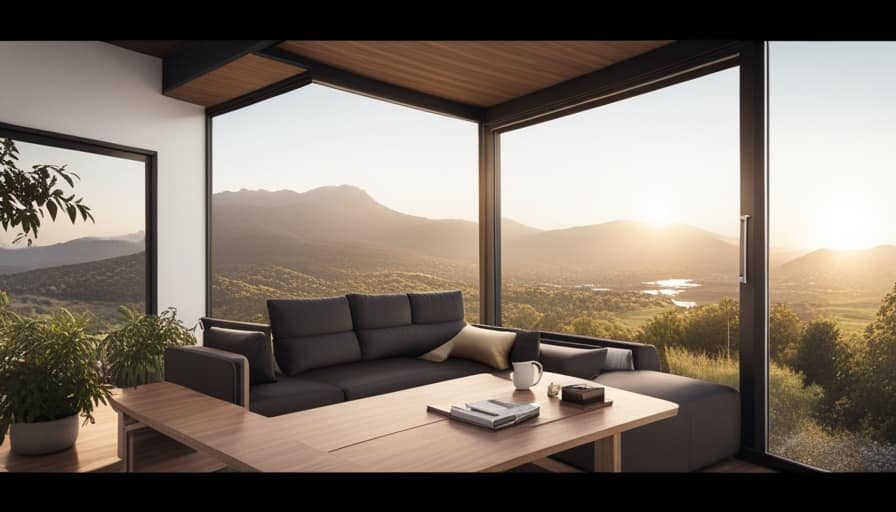
As someone living in Fresno, I have always believed in the saying ‘home is where the heart is.’ Thanks to the city’s forward-thinking housing policies, even the smallest of homes can now have a place to call their own.
In this article, we’ll explore how Fresno has embraced the tiny house movement, collaborating with advocates and implementing innovative zoning regulations. Join me as we delve into the challenges faced and the remarkable progress made towards building a thriving tiny house community in Fresno.
Key Takeaways
- Fresno has implemented housing policies and initiatives aimed at increasing access to affordable housing, including energy-efficient homes and tiny house construction.
- Collaboration with tiny house advocates is crucial for effective housing solutions, as they bring valuable insights and innovative ideas to the table.
- Zoning regulations and permitting processes in Fresno are designed to engage the community and ensure that their needs and preferences are considered.
- Fresno has created innovative tiny house communities that focus on sustainability and affordability, incorporating features such as solar panels and rainwater harvesting systems.
The Shift in Housing Policies
I’m excited to talk about the changes happening in housing policies.
One of the most pressing issues in our society today is housing affordability. Many individuals and families struggle to find affordable housing options, causing financial strain and instability.
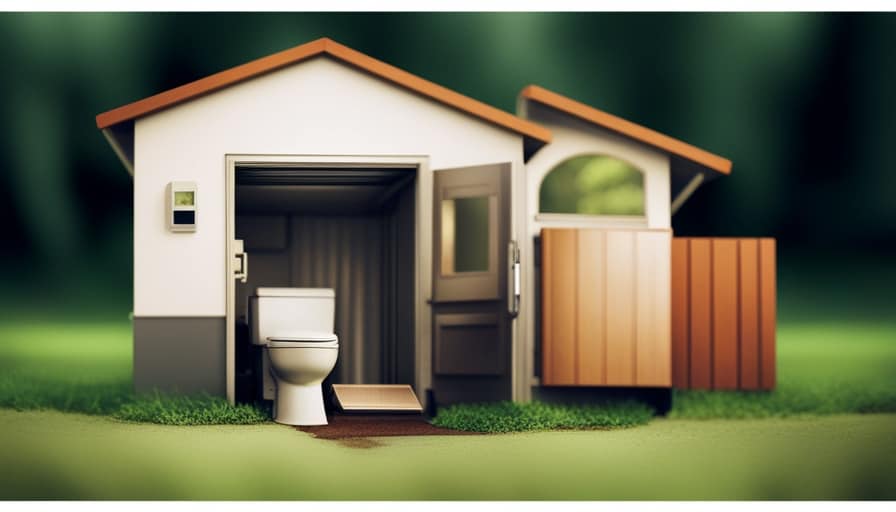
As a result, there’s been a shift in housing policies towards promoting sustainable living and increasing access to affordable housing. Governments and organizations are recognizing the importance of creating housing opportunities that are both environmentally friendly and economically viable.
This involves initiatives such as promoting energy-efficient homes, supporting the construction of tiny houses, and implementing rent control measures.
Collaborating With Tiny House Advocates
Collaborating with tiny house advocates has been crucial in implementing effective housing solutions in the city of Fresno. Through collaboration strategies and community engagement, we’ve been able to work hand in hand with advocates to address the unique challenges and opportunities that tiny houses present.
These collaborations have allowed us to tap into the knowledge and expertise of tiny house advocates, who bring valuable insights and innovative ideas to the table. We’ve engaged in open and transparent dialogues, fostering a sense of trust and understanding between all parties involved.
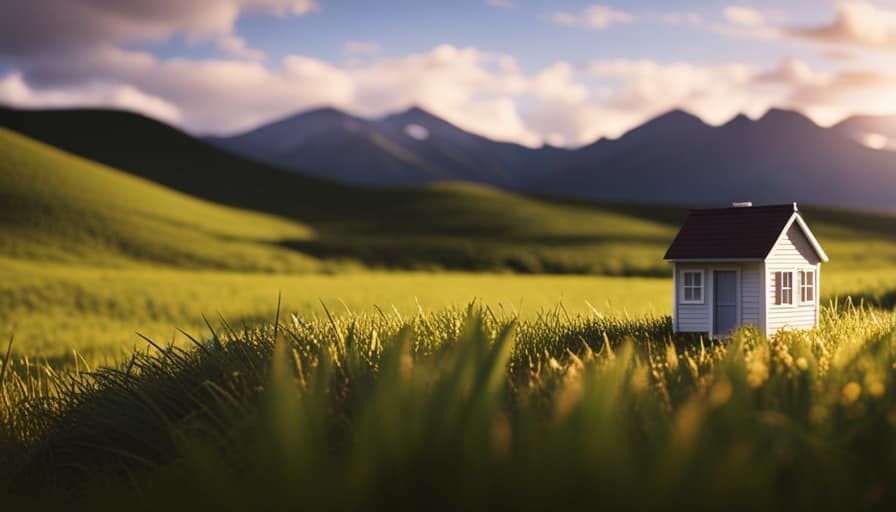
Zoning Regulations and Permitting Processes
Navigating the complexities of zoning regulations and permitting processes can be challenging, but it’s essential for ensuring the successful implementation of tiny house communities in the city of Fresno.
To streamline processes and make it easier for individuals and organizations to develop tiny house communities, the city of Fresno has taken steps to engage with the community and actively involve them in the decision-making process.
This includes hosting public meetings, soliciting feedback, and conducting thorough assessments of potential sites for tiny house communities. By involving the community in these processes, the city of Fresno can address any concerns or issues that may arise, while also ensuring that the needs and preferences of the community are taken into consideration.
This collaborative approach not only helps to build trust and support, but also allows for a more efficient and effective implementation of tiny house communities in the city.
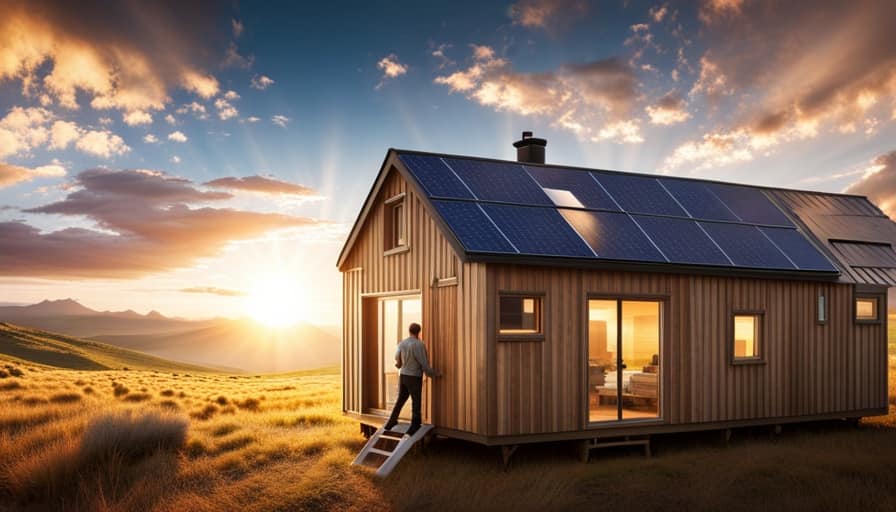
Innovative Tiny House Communities in Fresno
One innovative approach to creating tiny house communities in Fresno is through the use of sustainable materials and renewable energy sources. These communities are designed with a focus on sustainability, incorporating features such as solar panels, rainwater harvesting systems, and energy-efficient appliances. By utilizing these sustainable practices, residents can reduce their carbon footprint and live in homes that are environmentally friendly.
Additionally, these communities aim to provide affordable living options for individuals who may not be able to afford traditional housing. Through the use of smaller, more efficient spaces, the cost of construction and maintenance is reduced, making it more accessible for those on a limited budget.
These innovative tiny house communities in Fresno are paving the way for sustainable housing and promoting affordable living for all.
Transitioning into the next section, let’s explore the challenges faced in building a tiny house movement.
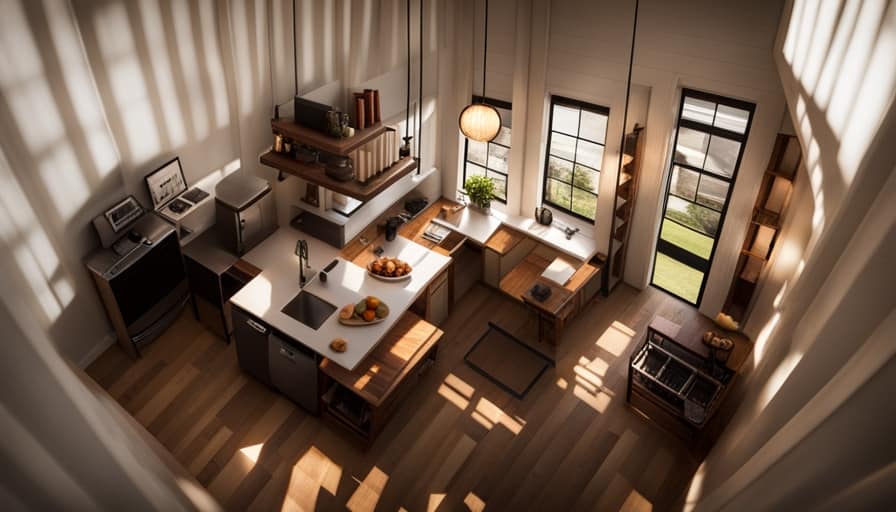
Overcoming Challenges and Building a Tiny House Movement
Confronting obstacles and working together, we can create a thriving tiny house movement in Fresno.
To overcome challenges and build a sustainable and affordable housing solution, we must first address zoning regulations. Currently, many cities have restrictions that make it difficult to build tiny houses on a permanent foundation. By advocating for changes in zoning laws, we can create more opportunities for tiny house communities.
Additionally, we need to address financing options for individuals interested in building tiny houses. Traditional lending institutions may not provide loans for these unconventional homes, so alternative financing options must be explored. Collaborating with local government, community organizations, and financial institutions can help us develop innovative solutions to overcome these challenges.
Frequently Asked Questions
How Long Does It Typically Take to Build a Tiny House?
Typically, it takes around 2-4 months to build a tiny house. The building timeline can vary based on factors like design complexity, availability of materials, and contractor availability. Cost considerations include materials, labor, and permits.
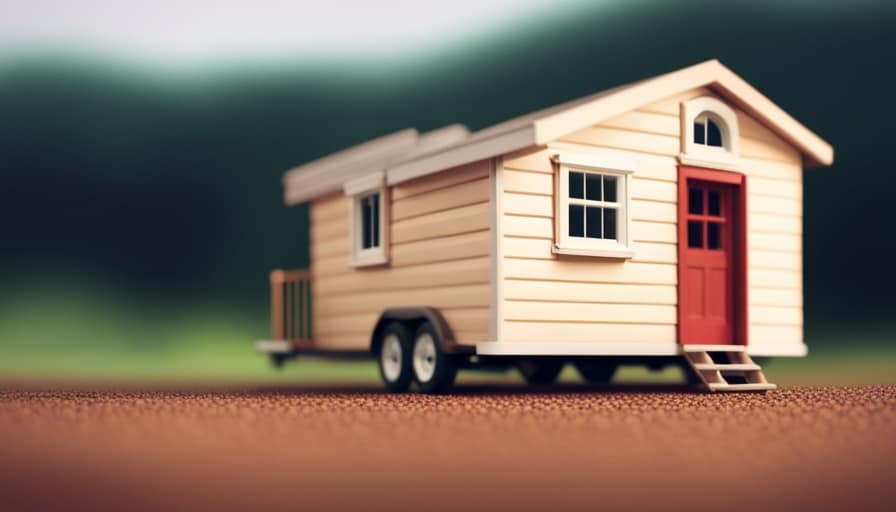
Are There Any Specific Requirements for the Size or Design of a Tiny House in Fresno?
In Fresno, specific requirements exist for the size and design of tiny houses. The city has set guidelines to ensure safety and conformity. Meeting these requirements is crucial to obtaining necessary permits and building a legally compliant tiny house.
Can I Legally Live in a Tiny House on Wheels in Fresno?
Yes, you can legally live in a tiny house on wheels in Fresno. While specific regulations may vary, other cities have implemented tiny house regulations with benefits such as affordability, sustainability, and minimal environmental impact.
How Can I Find Resources and Support for Building My Own Tiny House in Fresno?
Finding local workshops and connecting with tiny house builders in Fresno is crucial for building my own tiny house. Through thorough research and analytical thinking, I can discover resources and support to ensure a successful project.
Are There Any Financial Incentives or Grants Available for Individuals Interested in Building a Tiny House in Fresno?
There are financial assistance programs and grants available for individuals interested in building a tiny house in Fresno. It’s important to familiarize yourself with the building regulations and requirements to ensure compliance.
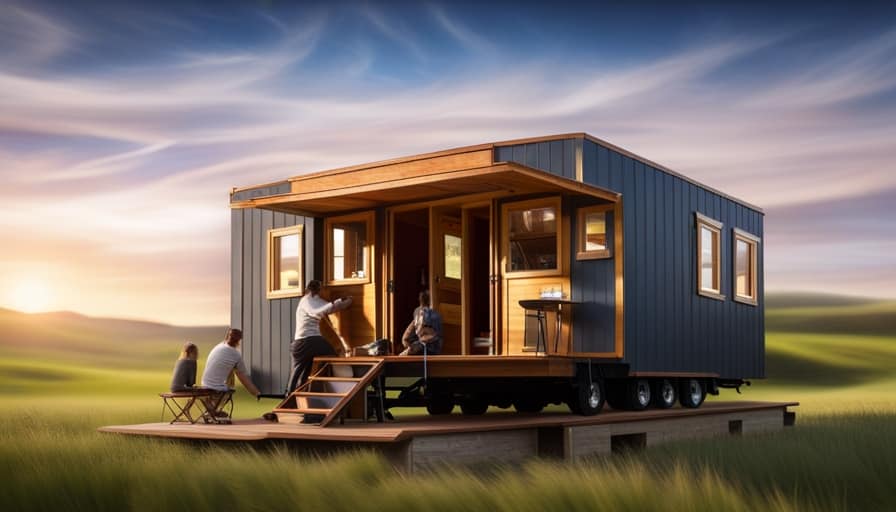
Conclusion
In conclusion, the city of Fresno has successfully embraced the tiny house movement through a shift in housing policies, collaboration with advocates, and innovative communities.
The zoning regulations and permitting processes have been streamlined to accommodate tiny house living. Despite challenges, the city has built a strong foundation for the tiny house movement to thrive.
As the saying goes, "The journey of a thousand miles begins with a single step," and Fresno has taken that step towards a more sustainable and affordable housing solution.
I’m Theodore, and I love tiny houses. In fact, I’m the author of Tiny House 43, a book about tiny houses that are also tree houses. I think they’re magical places where imaginations can run wild and adventures are just waiting to happen.
While tree houses are often associated with childhood, they can be the perfect adult retreat. They offer a cozy space to relax and unwind, surrounded by nature. And since they’re typically built on stilts or raised platforms, they offer stunning views that traditional homes simply can’t match.
If you’re looking for a unique and romantic getaway, a tree house tiny house might just be the perfect option.
Beginners Guides
How Do I Get Rid of Tiny Black Flies in My House

- Health risks associated with tiny black flies in the house
- Effective methods to prevent and control the presence of black flies in homes or gardens
I have tried every possible solution, but those annoying tiny black flies refuse to leave my house!
If you’re dealing with the same frustrating problem, don’t worry – I’ve got you covered.
In this article, I’ll share my expert knowledge on identifying these pesky bugs, understanding the causes of their infestations, and provide you with both natural and chemical remedies to banish them for good.
Say goodbye to those annoying flies and hello to a fly-free home!
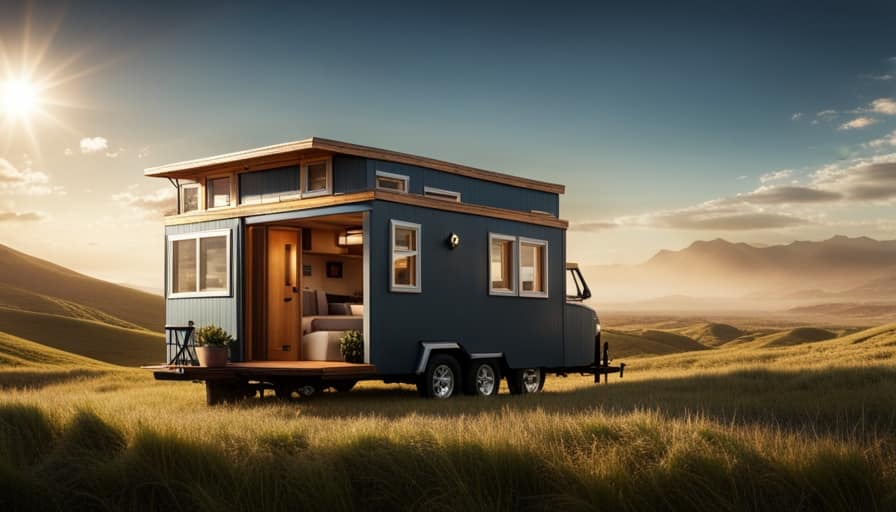
Key Takeaways
- Identify and eliminate breeding grounds by removing standing water and damp areas.
- Use natural remedies like homemade fly traps with apple cider vinegar and essential oils to repel flies.
- Consider using chemical treatments designed to kill black flies, following the instructions carefully.
- Take preventive measures to keep your house clean and free from food or organic debris to prevent future infestations.
Identifying the Tiny Black Flies
I can use a magnifying glass to examine the tiny black flies and determine their species. When it comes to differentiating between fruit flies and black flies, there are a few key characteristics to look out for.
Fruit flies are usually smaller in size, about 1/8 of an inch long, and have a tan or yellowish body with red eyes. On the other hand, black flies are slightly larger, measuring around 1/4 of an inch, and have a dark black or grayish body with dark wings.
Now, let’s move on to controlling and eliminating black flies in outdoor spaces. One effective method is to eliminate their breeding grounds by removing any standing water or damp areas where they can lay their eggs. Regularly emptying and cleaning birdbaths, flower pots, and gutters can help prevent black fly infestations.
Additionally, using insect repellents or installing fine mesh screens on doors and windows can provide some protection against these pesky pests.
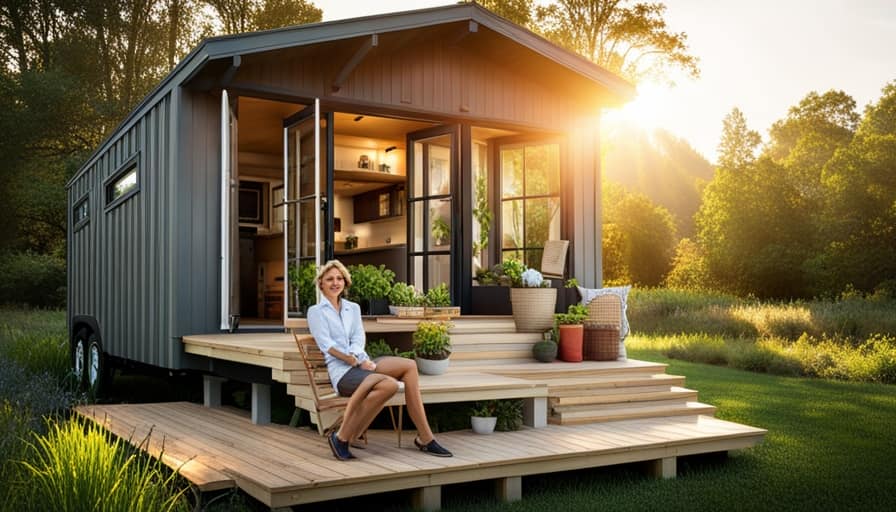
Understanding the Causes of Black Fly Infestations
To understand the causes of black fly infestations, we need to examine their preferred breeding sites and environmental conditions. These tiny pests thrive in moist and decaying organic matter, making the following places common breeding grounds for black flies:
-
Standing water: Black flies lay their eggs in standing water, such as ponds, lakes, and even puddles. It’s crucial to eliminate any stagnant water sources around your house to prevent infestations.
-
Overgrown vegetation: Black flies are attracted to dense vegetation, especially if it’s near water bodies. Trim shrubs, mow your lawn regularly, and remove any overgrown plants to discourage black flies from breeding.
-
Moist organic matter: Black flies lay their eggs in decomposing leaves, grass clippings, and other organic debris. Keep your yard clean and free of debris to reduce the likelihood of black fly infestations.
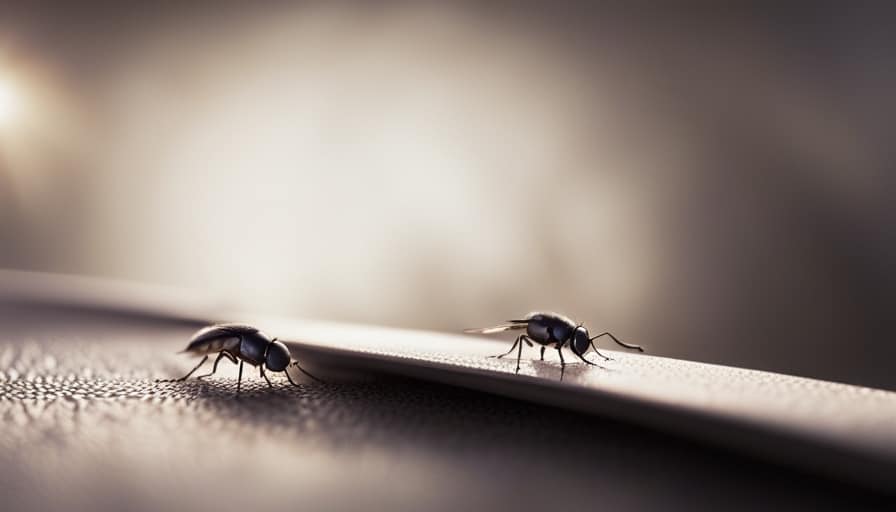
Understanding these common breeding grounds can help you identify and eliminate the causes of black fly infestations, keeping your home fly-free and comfortable.
Natural Remedies to Eliminate Tiny Black Flies
With a combination of proper sanitation and natural remedies, you can effectively eliminate tiny black flies from your house. One effective natural remedy is making homemade fly traps. These traps can be made using common household items such as apple cider vinegar, dish soap, and a plastic bottle. Simply cut the bottle in half, pour a mixture of apple cider vinegar and dish soap into the bottom half, and place the top half of the bottle inverted into the bottom half. The flies will be attracted to the scent of the vinegar, but the dish soap will prevent them from escaping. Another natural remedy is using essential oils for fly control. Oils such as lavender, peppermint, and eucalyptus have strong scents that repel flies. Simply mix a few drops of your chosen oil with water and spray it around areas where flies are present. By incorporating these natural remedies into your fly control routine, you can effectively get rid of tiny black flies in your house.
| Homemade Fly Traps | Essential Oils for Fly Control |
|---|---|
| – Apple cider vinegar and dish soap mixture in a plastic bottle | – Lavender, peppermint, and eucalyptus oils |
| – Flies are attracted to the vinegar scent but trapped by the soap | – Mix a few drops with water and spray in affected areas |
| – Simple and cost-effective solution | – Oils have strong scents that repel flies |
| – Dispose of trapped flies regularly | – Repeat application as needed |
Chemical Treatments for Getting Rid of Black Flies
By using chemical treatments, you can effectively eliminate black flies from your house. Here are three options to consider:
-
Chemical insecticides: These products are specifically designed to kill insects, including black flies. Look for insecticides that are labeled for use against flies and follow the instructions carefully. Apply the insecticide in areas where black flies are commonly found, such as around windows, doors, and other entry points.
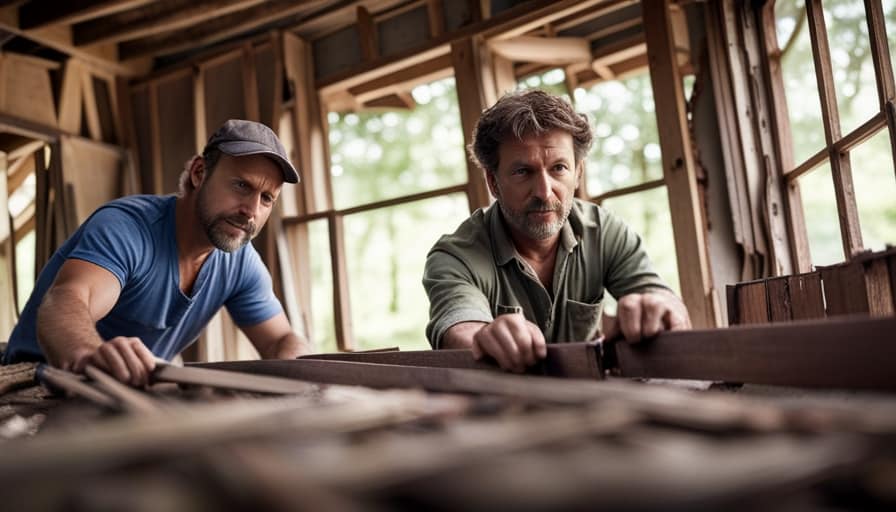
-
Fly traps: There are chemical-based fly traps available that attract and capture black flies. These traps use a combination of chemicals and pheromones to lure the flies in and prevent them from escaping. Place the traps in areas where black flies are present, such as near garbage cans or in the kitchen.
-
Professional exterminator: If you’re dealing with a severe infestation or if chemical treatments haven’t been effective, it may be best to call a professional exterminator. They have access to stronger chemicals and can provide a targeted approach to eliminate black flies from your house.
Remember to always read and follow the instructions on chemical insecticides and traps, and consider the help of a professional if needed.
Preventing Future Infestations of Tiny Black Flies
My best advice for preventing future infestations of tiny black flies in my house is to maintain proper sanitation and eliminate potential breeding grounds.
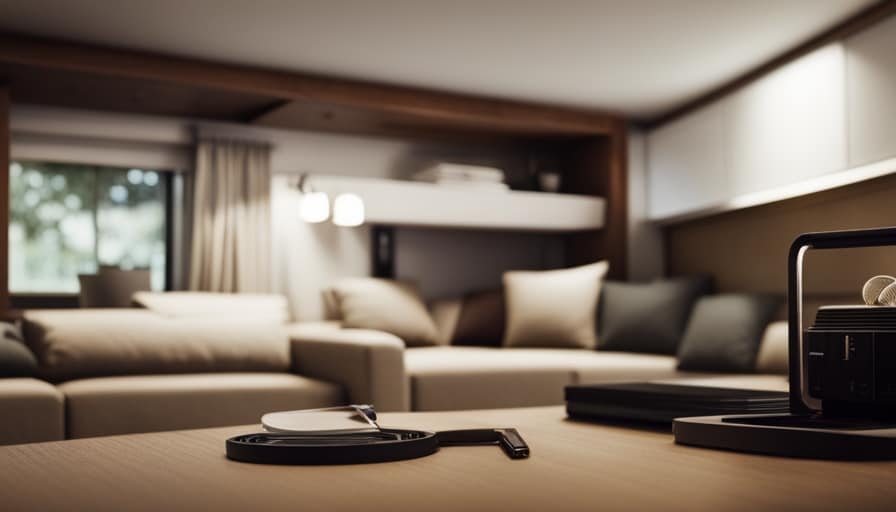
To maintain a fly-free environment, it’s important to keep your house clean and free from any food or organic debris. Make sure to regularly clean your kitchen, especially the countertops, sinks, and garbage disposal areas. Keep all food stored in airtight containers and promptly clean up any spills or crumbs.
Additionally, it’s crucial to identify and eliminate common breeding grounds for black flies in homes. These include standing water, damp areas, and overwatered plants. Regularly check for any leaks or moisture issues and fix them promptly.
Frequently Asked Questions
Can These Tiny Black Flies Harm Humans or Pets?
I’m not an expert, but I can share that tiny black flies in the house might be annoying, but they usually don’t harm humans or pets. It’s always a good idea to take preventive measures to control their presence.
Are There Any Specific Regions or Climates Where These Black Flies Are More Common?
In certain regions and climates, these pesky black flies tend to be more common. Understanding their preferences can help in devising effective strategies to keep them at bay.
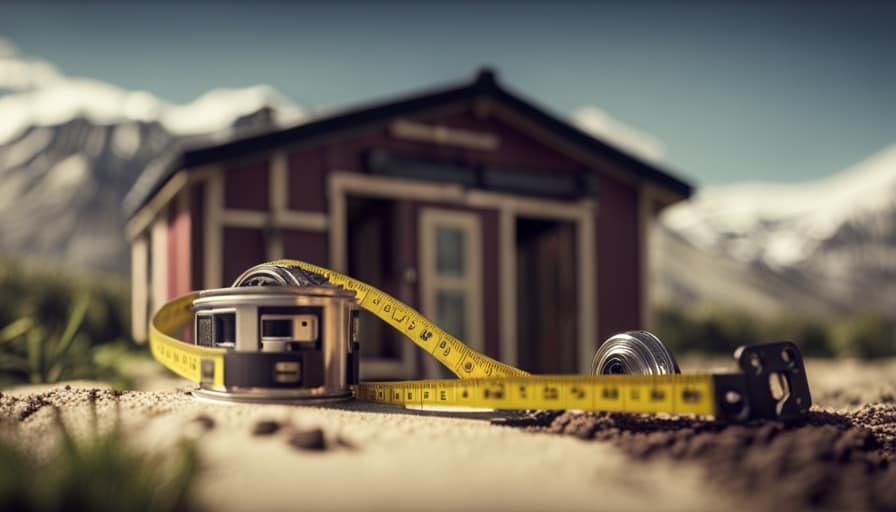
Can These Tiny Black Flies Cause Damage to Plants or Food?
Yes, these tiny black flies can cause damage to indoor plants as they lay their eggs in the soil. They can also contaminate stored food by landing on it and leaving behind bacteria.
How Long Does It Usually Take for Natural Remedies to Effectively Eliminate Black Flies?
On average, natural remedies can effectively eliminate black flies within a few days. However, the exact time may vary depending on the severity of the infestation and the specific remedies used.
Are There Any DIY Traps or Baits That Can Be Used to Catch and Eliminate These Tiny Black Flies?
There are several DIY fly traps and effective baits that can be used to catch and eliminate those pesky tiny black flies. Let me share some knowledge and details on how you can tackle this issue.
Conclusion
So there you have it, a plethora of methods to bid farewell to those pesky tiny black flies that have invaded your humble abode.
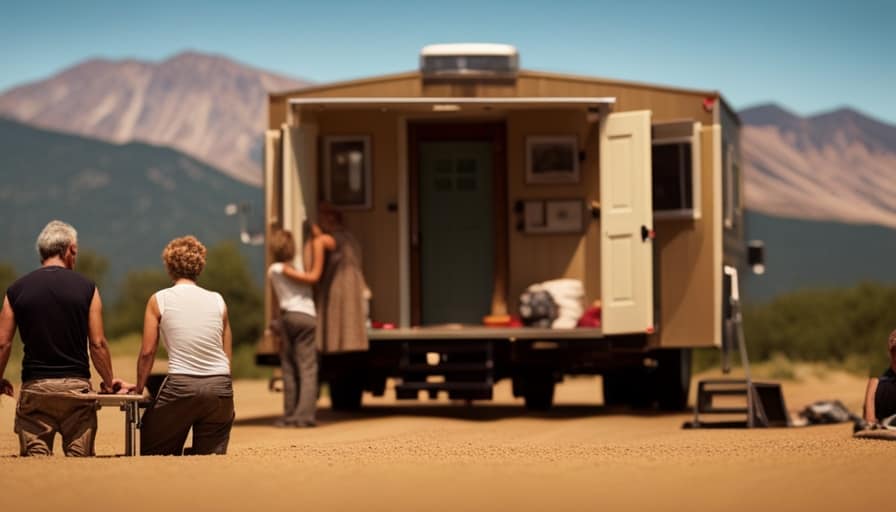
From natural remedies to chemical treatments, we’ve covered it all.
Now, armed with this knowledge, you can take control of your home and ensure these unwelcome guests never return.
Happy fly-free living!
I’m Theodore, and I love tiny houses. In fact, I’m the author of Tiny House 43, a book about tiny houses that are also tree houses. I think they’re magical places where imaginations can run wild and adventures are just waiting to happen.
While tree houses are often associated with childhood, they can be the perfect adult retreat. They offer a cozy space to relax and unwind, surrounded by nature. And since they’re typically built on stilts or raised platforms, they offer stunning views that traditional homes simply can’t match.
If you’re looking for a unique and romantic getaway, a tree house tiny house might just be the perfect option.
Beginners Guides
How Do I Get Rid of Tiny Bugs in My House

I have pests in my home that are causing me frustration! They are like small intruders that are appearing all over the place. However, do not worry, as I have conducted thorough research and found effective solutions to eliminate these bothersome pests.
In this article, I’ll guide you through identifying the types of bugs, understanding the causes of infestations, and providing natural and chemical remedies to eliminate them.
Say goodbye to those unwelcome guests and hello to a bug-free home!
Key Takeaways
- Identifying the specific pest by observing droppings or behavior is crucial in getting rid of tiny bugs in the house.
- Proper sanitation practices, such as keeping the kitchen and dining areas clean, are important in preventing bug infestations.
- Natural remedies like herbal insecticides and essential oils can be effective in deterring bugs without the use of harsh chemicals.
- Regular cleaning, sealing cracks, and maintaining a tidy home are essential in preventing future bug infestations.
Identifying the Types of Tiny Bugs in Your House
I can easily identify the types of tiny bugs in my house by observing their physical characteristics and behavior. One of the most common signs of an infestation is the presence of droppings or excrement. Different types of bugs leave different types of droppings, which can help determine the specific pest in your house.
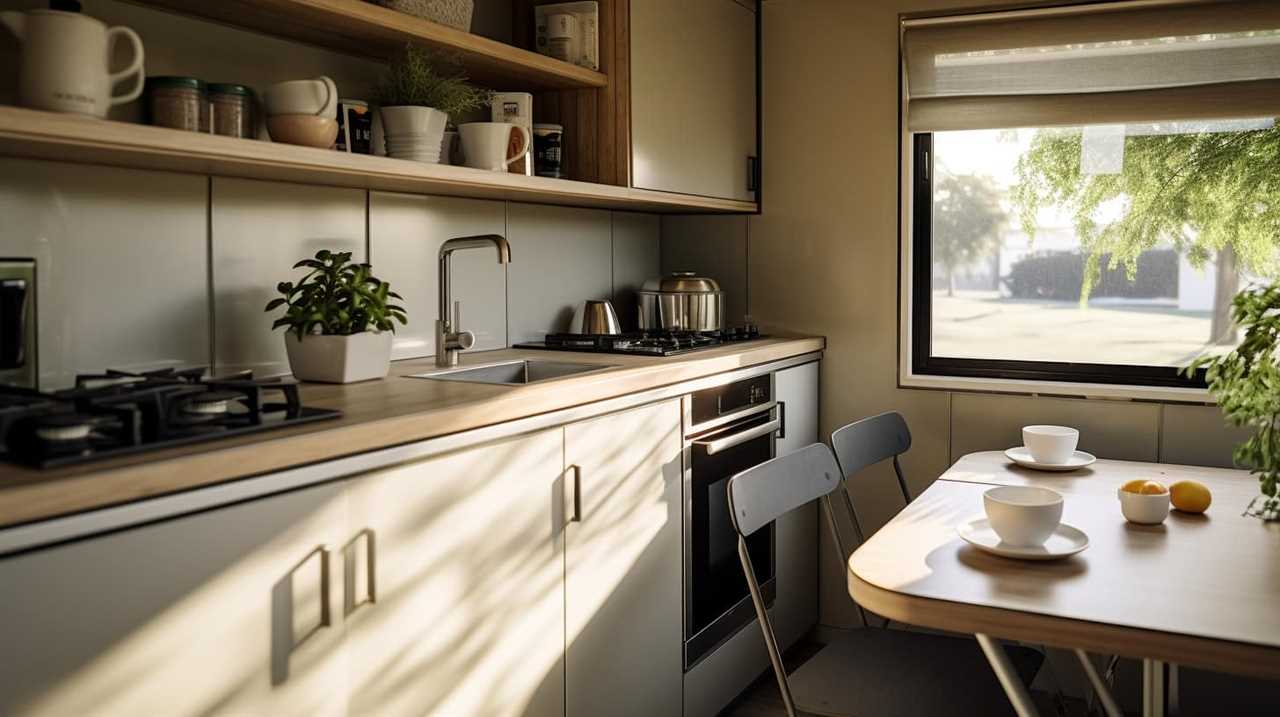
Additionally, observing the behavior of the bugs can provide valuable information. Some bugs are more active during the day, while others are nocturnal. Some bugs may prefer certain areas of the house, such as the kitchen or bathroom.
If you’re unsure about the type of bug in your house, it’s advisable to consult with professional exterminators who’ve the expertise to accurately identify and eliminate the pests.
Understanding the Common Causes of Bug Infestations
One of the most common causes of bug infestations is a lack of proper sanitation practices in the home. Understanding bug behavior and knowing their common household bug habitats can help prevent infestations.
Bugs are attracted to food sources, so it’s important to keep the kitchen and dining areas clean and free of crumbs and spills. Regularly emptying and cleaning garbage cans can also deter bugs from entering the home.

Additionally, bugs thrive in warm and moist environments, so it’s important to fix any leaks or damp areas in the house. Cluttered spaces provide hiding spots for bugs, so keeping the home organized and decluttered can help minimize their presence.
Natural Remedies to Get Rid of Tiny Bugs in Your House
To effectively eliminate tiny bugs in your house, try using natural remedies with ingredients such as vinegar and essential oils. Natural remedies are a great option for those who prefer non-toxic solutions and want to avoid harsh chemicals.
One effective natural remedy is using herbal insecticides. These insecticides are made from plant-based ingredients and can be sprayed in areas where bugs are commonly found, such as corners, cracks, and crevices.
Another natural remedy to consider is essential oils. Certain essential oils, such as peppermint, lavender, and tea tree oil, have insect-repellent properties. Simply mix a few drops of the essential oil with water and spray it around your house to deter bugs.
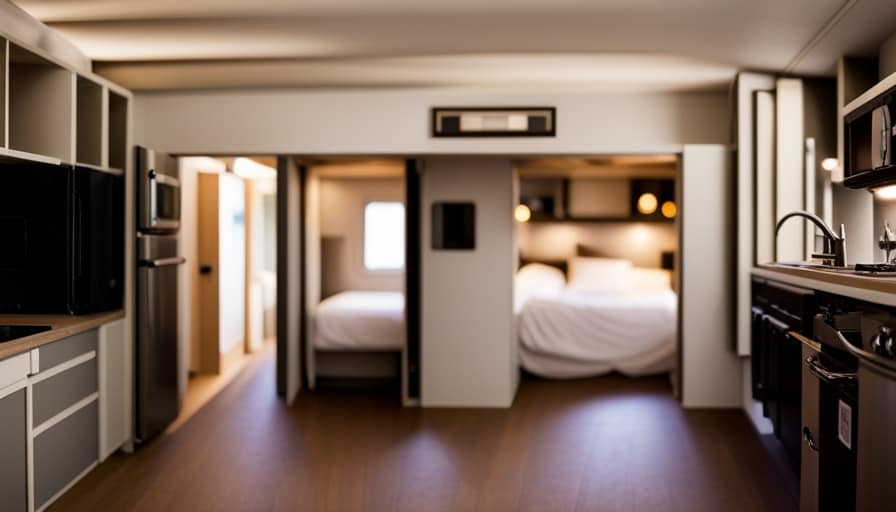
These natural remedies can be a safe and effective way to get rid of tiny bugs in your house.
Chemical Treatments for Eliminating Tiny Bugs
There are several effective chemical treatments available to eliminate tiny bugs in your house. When it comes to pest control methods, using insecticides is a common and efficient approach. There are various types of insecticides on the market, each with its own advantages and disadvantages.
It’s important to compare different insecticides to determine which one is best suited for your needs. Some insecticides target specific bugs, while others have a broad spectrum of effectiveness. Additionally, consider the application method and the duration of effectiveness. Some insecticides require direct contact with the bugs, while others can be used as a residual treatment.
It’s also essential to follow the safety instructions provided by the manufacturer when using chemical treatments to ensure the well-being of both humans and pets in your home.
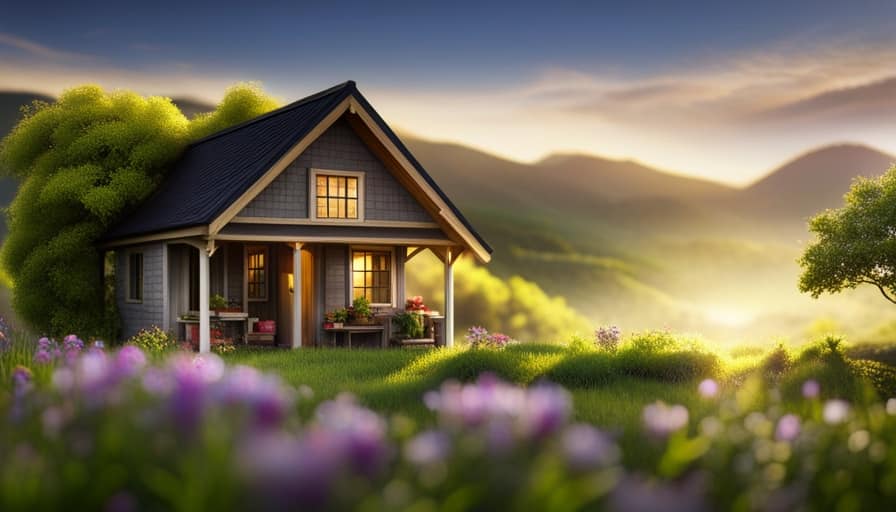
Preventing Future Bug Infestations in Your Home
I’ll make sure to regularly clean and seal any cracks in my house to keep bugs from coming in. Effective cleaning techniques are crucial in preventing bug infestations and creating a bug-free environment. Maintaining a clean and tidy home is essential to minimize the presence of bugs. Regularly vacuuming carpets and upholstery, sweeping and mopping floors, and wiping down surfaces will help eliminate any crumbs or food particles that may attract bugs. Additionally, proper food storage is essential to prevent bugs from being attracted to your kitchen. Keeping food in sealed containers and promptly cleaning up spills or crumbs will deter bugs from entering your home. Regularly inspecting and repairing any cracks or gaps in windows, doors, and walls will also help prevent bugs from finding their way inside.
| Cleaning Techniques | Maintenance Tips |
|---|---|
| Vacuum carpets and upholstery | Inspect and repair cracks or gaps |
| Sweep and mop floors | Properly store food to deter bugs |
| Wipe down surfaces | Regularly clean and seal cracks |
| Dispose of trash regularly | Keep a tidy and clutter-free home |
Frequently Asked Questions
Can These Tiny Bugs Cause Any Harm to Humans or Pets?
I’m not sure about the specific bugs in your house, but some tiny bugs can cause harm to humans or pets. It’s important to address the bug infestation promptly to protect your health and take preventive measures to keep them out.
How Long Does It Typically Take for Natural Remedies to Effectively Get Rid of Tiny Bugs?
It typically takes a few weeks for natural remedies to effectively eliminate tiny bugs. However, it’s important to note that results may vary. As for side effects, natural remedies are generally safe for humans and pets.
What Are Some Signs That Indicate a Bug Infestation in the House?
Signs of a bug infestation in the house include seeing live or dead bugs, finding their droppings or eggs, and noticing damage to furniture or walls. Preventing bug infestations involves keeping a clean and tidy home, sealing entry points, and using insect repellents.
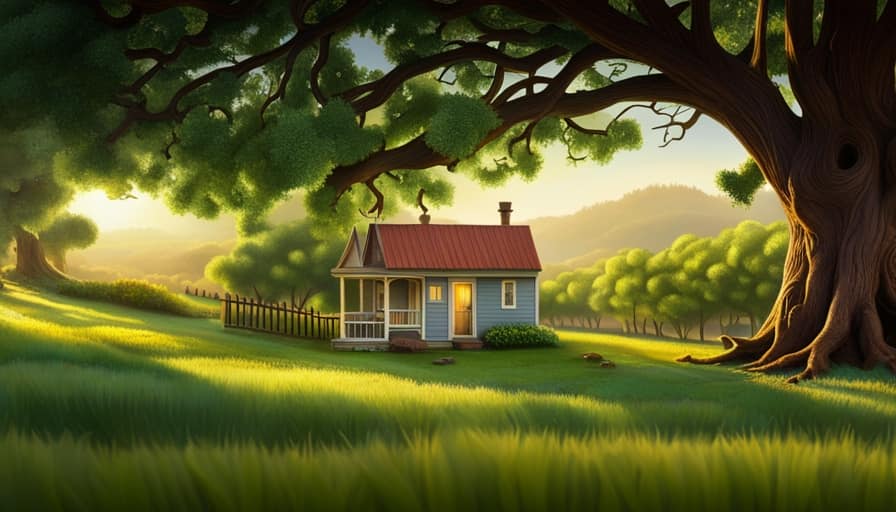
Are There Any Specific Areas in the House Where These Tiny Bugs Are Commonly Found?
In my experience, tiny bugs tend to hide in common areas like kitchen cabinets, bathrooms, and near windows. To prevent them, I recommend regular cleaning, sealing cracks, and keeping food stored properly.
Can Certain Weather Conditions or Changes in the Environment Attract These Tiny Bugs Into the House?
Certain weather conditions or changes in the environment can attract these tiny bugs into the house. Factors like warm and humid weather, open windows, and presence of organic matter can make your home more inviting for them.
Conclusion
In conclusion, while it can be frustrating to deal with tiny bugs in your house, there are effective ways to get rid of them.
By identifying the types of bugs and understanding the common causes of infestations, you can take natural or chemical treatments to eliminate them.

Additionally, taking preventive measures can help to avoid future bug infestations.
Remember, with the right knowledge and strategies, you can create a bug-free environment in your home.
I’m Theodore, and I love tiny houses. In fact, I’m the author of Tiny House 43, a book about tiny houses that are also tree houses. I think they’re magical places where imaginations can run wild and adventures are just waiting to happen.
While tree houses are often associated with childhood, they can be the perfect adult retreat. They offer a cozy space to relax and unwind, surrounded by nature. And since they’re typically built on stilts or raised platforms, they offer stunning views that traditional homes simply can’t match.
If you’re looking for a unique and romantic getaway, a tree house tiny house might just be the perfect option.
-

 Beginners Guides2 weeks ago
Beginners Guides2 weeks agoHow To Buy A Tesla Tiny House
-

 Energy Efficiency2 months ago
Energy Efficiency2 months agoBest Tiny Homes For Cold Climates
-

 Beginners Guides1 week ago
Beginners Guides1 week agoTiny House Nation Where Are They Now Stephanie
-

 Tiny House Resources (e.g., legalities, cost, insurance, FAQs)2 months ago
Tiny House Resources (e.g., legalities, cost, insurance, FAQs)2 months agoDo Tiny Homes Need Planning Permission?
-

 Beginners Guides3 weeks ago
Beginners Guides3 weeks agoFrom The Show Tiny House Nation How Many Keep Their Tiny House?
-

 Beginners Guides2 months ago
Beginners Guides2 months agoUsing a Climbing Net For Treehouse Construction
-

 Beginners Guides2 months ago
Beginners Guides2 months agoHow to Build a Treehouse Without Drilling Into the Tree
-

 Beginners Guides3 weeks ago
Beginners Guides3 weeks agoTiny House Nation Who Pays For The Houses




